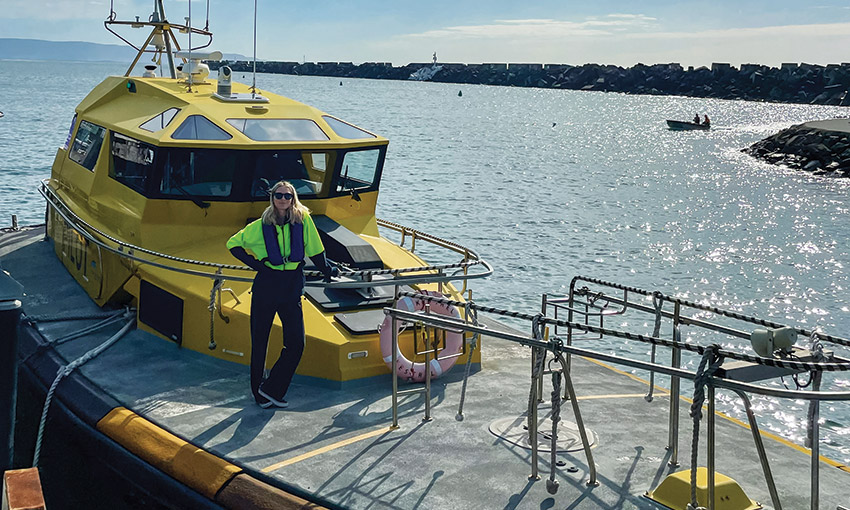WHY did you consider a career in the maritime industry?
My great grandfather worked on steamships, my granddad worked on tugs in Port Kembla and my father started as a linesman in Port Kembla and is now a tug master. I’ve been aware of the sea and the port from an early age and wanted to follow in their footsteps.
How did you get started at the port?
I originally secured a position as a stevedore at Linx Cargo Care in Port Kembla. I was taken on as one of four women in a workforce of about 80 men. My work involves operating heavy machinery, driving bobcats and forklifts, working on bulk cargo and working on the many car carriers that use the port. I got my deckhand ticket while working for a cleaning company in 2013, when I was 19. I found out the port authority was advertising for a casual port officer. I had been a stevedore by that time for more than eight years and wanted a change. I applied for the job and was fortunate enough to be accepted.
What does your job involve?
My main work is on the pilot cutter, transferring pilots to and from ships. I also participate in oil-spill drills, audits and issuing hot-work permits. My job has also enabled me to achieve my qualification as a master less than 24 metres near coastal. There are two casual port officers in the port and both of us are women; we work together a lot. I also have just completed my VTS operator course (V103) and can now help out in the VTS at Port Kembla, directing and advising the vessels.
What are the most enjoyable and challenging parts of working in a port?
I love the variety of the work. Working on the pilot cutters is interesting and exciting; as a stevedore I get to work on the many different types of vessels in the port. Now working in VTS, I can also get an overview of port operations. All my colleagues are supportive and helpful. As a mother with a four-year-old daughter, the most challenging part is juggling work and home life. I have a huge diary which keeps me on track. Inevitably there is the occasional home crisis, but my managers are very flexible and accommodating. I have great support from my family. I also play in a rock band, so life can get hectic! It is all possible, but you need to be organised. It is not easy.
What fun anecdote can you share about being a woman in maritime?
As the first pregnant stevedore at Port Kembla, maternity workwear was not exactly high fashion. I often felt that when I was going on board ships, I was smuggling someone else aboard. I remember one time when a truck needed a clean-out of its load, the truck driver was told, “Don’t worry, Cori will be here with the excavator”. When I arrived, his face was a picture – he may have been expecting a large man.
Do you have any words of advice for other women in the maritime industry?
Working in the industry is not a zero-sum game; someone else’s loss is not your gain, and your gain is not someone else’s loss. There are no losers; we can all win. If you can find a role model and mentor to work with, it can really help. We must encourage and inspire each other. If you are not learning and growing, you are stagnant. Have a goal and work towards it. My next challenge is my master 4 qualification, but while I work towards that, my next qualification will be marine engine driver grade 2.
What would be your vision for a fully diverse, equitable and inclusive industry?
Diversity means more than a tolerance for certain minorities; it means a true acceptance and mutual respect. A diverse industry will open the door for innovative ideas from different perspectives and lead to better outcomes. I would also love to see a future where childcare is tailored to suit parents who are shift workers, perhaps with a subsidy for out-of-hours care, not just nine-to-five. Not everyone works Monday to Friday, nine-to-five anymore.
This article appeared in the June 2023 edition of DCN Magazine





